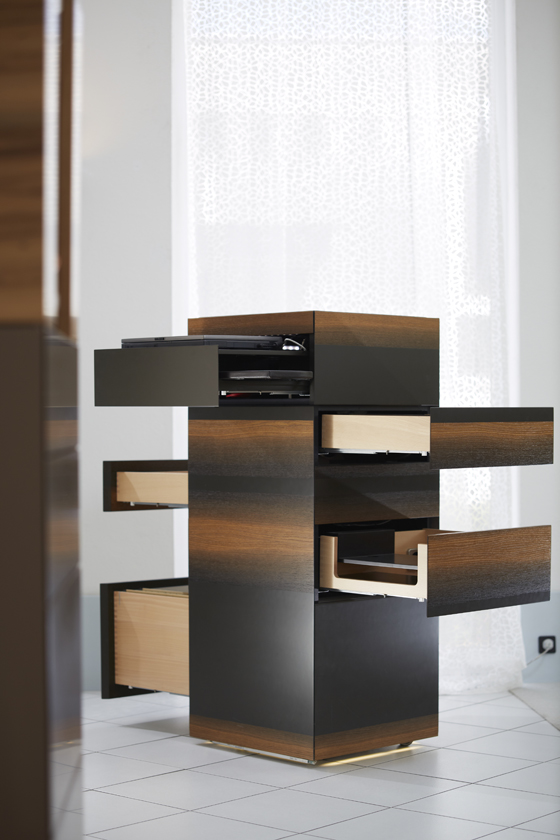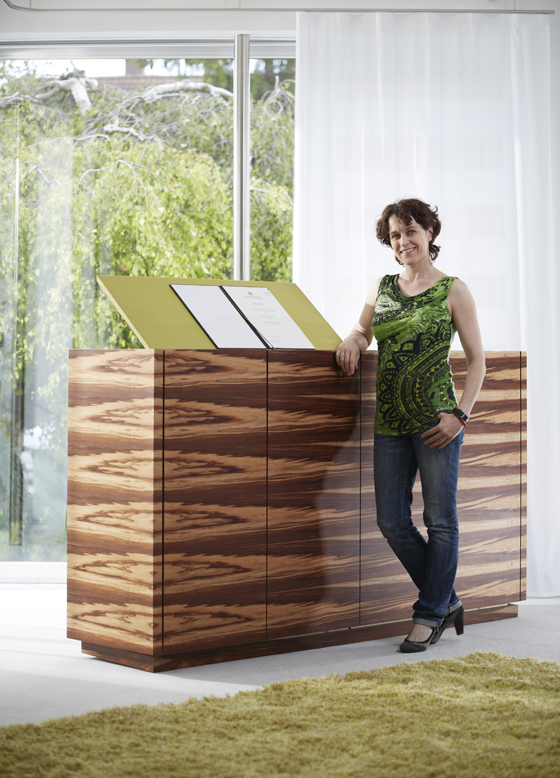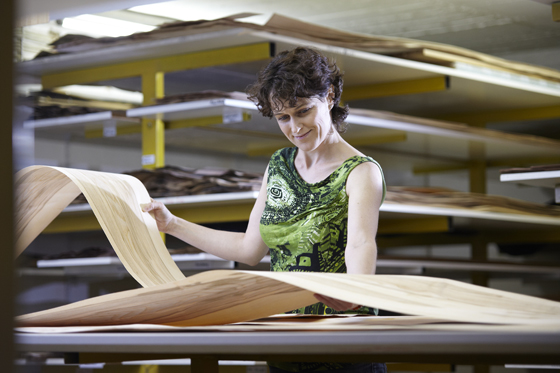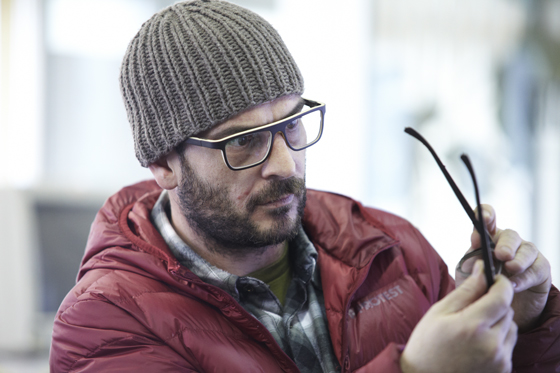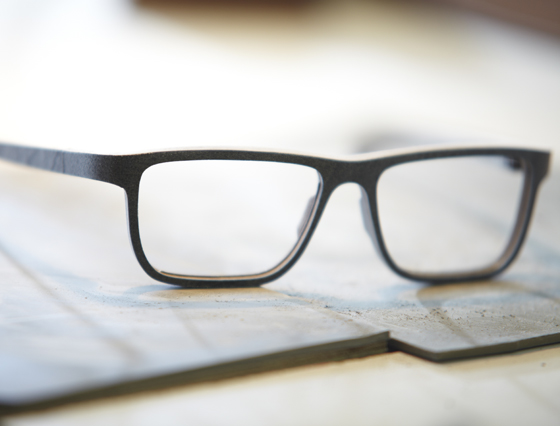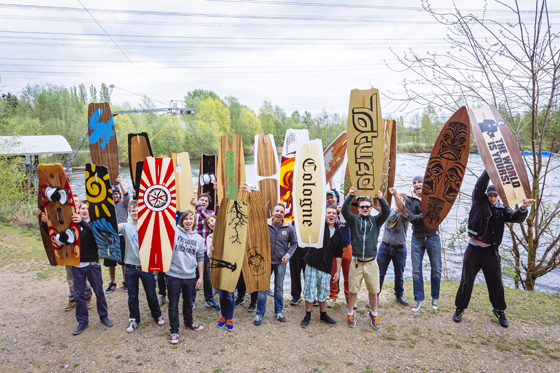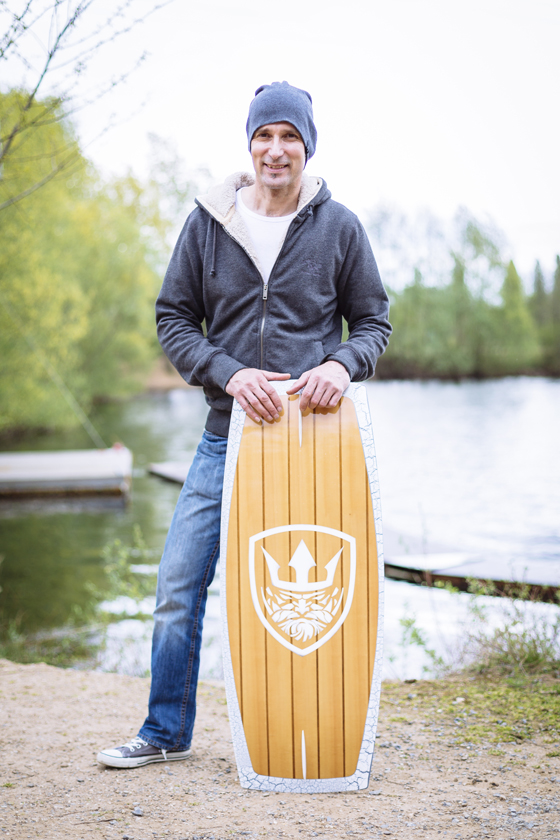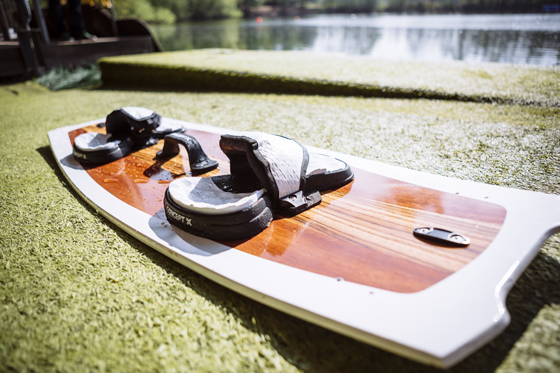Veneer: Wood at its Best
Texte par Ulrich Büttner
Neustadt an der Weinstrasse, Allemagne
03.12.14
We all know what veneer is – at least we think we do. Few of us, though, know the full range of applications that this finest of tree products has to offer. Highly versatile not only in technical terms, but also in its visual and emotional impact, veneer is always much more than simply a surface finish. On the contrary, there is a complex quality to it that appeals to a number of senses. The marketing association Initiative Furnier + Natur e. V. therefore regards it as one of its objectives to communicate this richly faceted diversity and to draw the attention of architects and designers to the enormous potential of veneer as a natural material. All it takes is a few typical applications to open our eyes to what veneer really can do.
While veneer may seem perfectly suited to the modern age in particular, it is not a recent invention. In ancient times, it was already common practice to cover objects in thin sheets of top-quality wood in order to enhance their appearance. However, veneer as we know it – thin layers of wood produced in an industrial cutting process – has existed since about 1870. And since then, veneer produced from a range of high-quality, decorative and coloured woods has been used primarily in furniture production to add a stylish surface finish to basic types of wood or composite wood materials. Most of today’s veneers are between 0.45 and 6 mm in thickness, and the available selection is no longer restricted to so-called domestic varieties of wood. Veneer producers now send their experts around the world in search of promising-looking trees, but whether they have made the right choice will not become clear until the production stage.
So when furniture designer Sarah Maier chooses veneers for her designs, she can do so from an abundant selection: the storage facilities of veneer producers display all available varieties of wood, together with the wide spectrum of qualities and features on offer. In principle, any type of veneer can be applied to any piece of furniture – at least technically – but Maier takes a different approach, preferring instead to painstakingly select the ideal veneer for every design in her collection. In addition, she goes out of her way to adapt the commissioned furniture to each customer’s character, and to personalise the design by suggesting appropriate veneers. ‘There are apple tree families, satin walnut men and cherry wood couples,’ she explains, adding: ‘Striking veneers need to make an impact – in other words, to appear in a prominent location within the home – for example as a kitchen island with veneer finish right next to a monochrome kitchen unit.’
Roland Wolf of Rolf Spectacles has enabled veneer to achieve fame and recognition in an entirely different application. For a number of years now he has been creating new trends within the spectacles business with his collections of veneer glasses. The original idea was a pair of glasses made of wood and featuring a novel wooden hinge, with lenses created using a new technique. It has been a long journey from the initial prototypes to the spectacles on offer today. Unlike metal or plastic, wood is not a homogeneous material, and it was first necessary to develop the right tools to process the wood in the optimum way.
Wolf recollects, not without pride: ‘At the beginning, we made most of our machines ourselves, or they were converted from machinery originally built for an entirely different purpose, such as milking machines.’ Today, his company offers a range of collections featuring veneer glasses and the appropriate accessories. In spite of its international operations, the firm intends to maintain the family character of its in-house production, and although this sounds relatively uncomplicated, it involves a fundamental challenge that goes well beyond questions of style and design. The fact is that it takes no fewer than 78 production stages to create a pair of veneer glasses. Apart from craftsmanship, this also requires passion – a passion for the material and product that presupposes a similar enthusiasm on the part of customers. ‘We make glasses for people who not only appreciate design and technology, but are also inspired by traditional values, and for whom a commitment to natural things is more than mere lip service,’ explains Wolf, the creator of wood veneer spectacles.
Great appearance, perfect characteristics. What looks so impressive and is also a logical development on such a delicate object as a pair of spectacles is harder to imagine when it comes to bathtubs made of veneer. Rolf Senti creates such works of art. He has always been fascinated by wood, and a wooden bathtub has a highly unusual look and feel, while also generating a warm atmosphere. The critical disadvantage of a solid wood bathtub, however, is that changes in temperature can cause the wood to warp, yet this is where veneer is vastly superior: its thinness not only allows tight radii, but also ensures that the overall shape of the tub does not warp. The prerequisite for this is a highly rigid supporting frame. ‘Twenty years ago we were the first company to offer bathtubs made of wood, and even today we’re still regarded as pioneers,’ recalls Senti, who emphasises the easy-care features of his bathtubs. They lose neither their shape nor their waterproof features and are subject to normal ageing, during which only aggressive cleaning products can damage their finish. The production process involves a high level of craftsmanship and the greatest precision in cutting the veneers to shape and then applying them to the mould. A colourless varnish impregnates the veneer, protecting it against moisture and enhancing the visual impact of this unique surface finish. With their unmistakable design, these wooden bathtubs have already received many international awards, and the customers who appreciate them are of course equally international.
Kiteboards, too, pose a special challenge for veneer. This sporting and leisure equipment is subjected to a great deal of mechanical stress and must withstand exposure to fresh water and salt water, and also to being left lying around in the blazing sun. At the same time, the veneer has to look attractive and function efficiently – and not just for a single summer. This is also how master carpenter Achim Allrich and his apprentice carpenters from Cologne see it. In their training workshop, the kiteboards are produced entirely from standard commercial veneers and materials – using a 2 x 4 mm poplar plywood core, glued with five-ply waterproofing, butted in a planing machine and with integrated hollow sections in non-load-bearing areas. The final top and bottom layer consists of birch airplane plywood that is one millimetre thick and has previously been coated with a visually impressive decorative veneer. Basically any veneer can be used as the final veneer finish. Water-resistant gluing of all the layers of veneer is essential, followed by a triple coating with epoxy resin to create a watertight finish. Veneer kiteboards are further proof that wood and water are compatible.
In competition with other materials, veneers are constantly opening up new areas of application – for while their classical use as a distinctive surface finish represents their most attractive and popular aspect, it is by no means the only feature of this material. In addition to the highly appreciated surface finish created by decorative veneers, normal veneers glued into supporting structures also have outstanding features. With its campaign of ‘FurnierGeschichten’ (veneer stories), the Furnier + Natur e.V.initiative aims to draw attention to the extraordinary, exclusive and even eccentric ideas and applications offered by this material.
---
